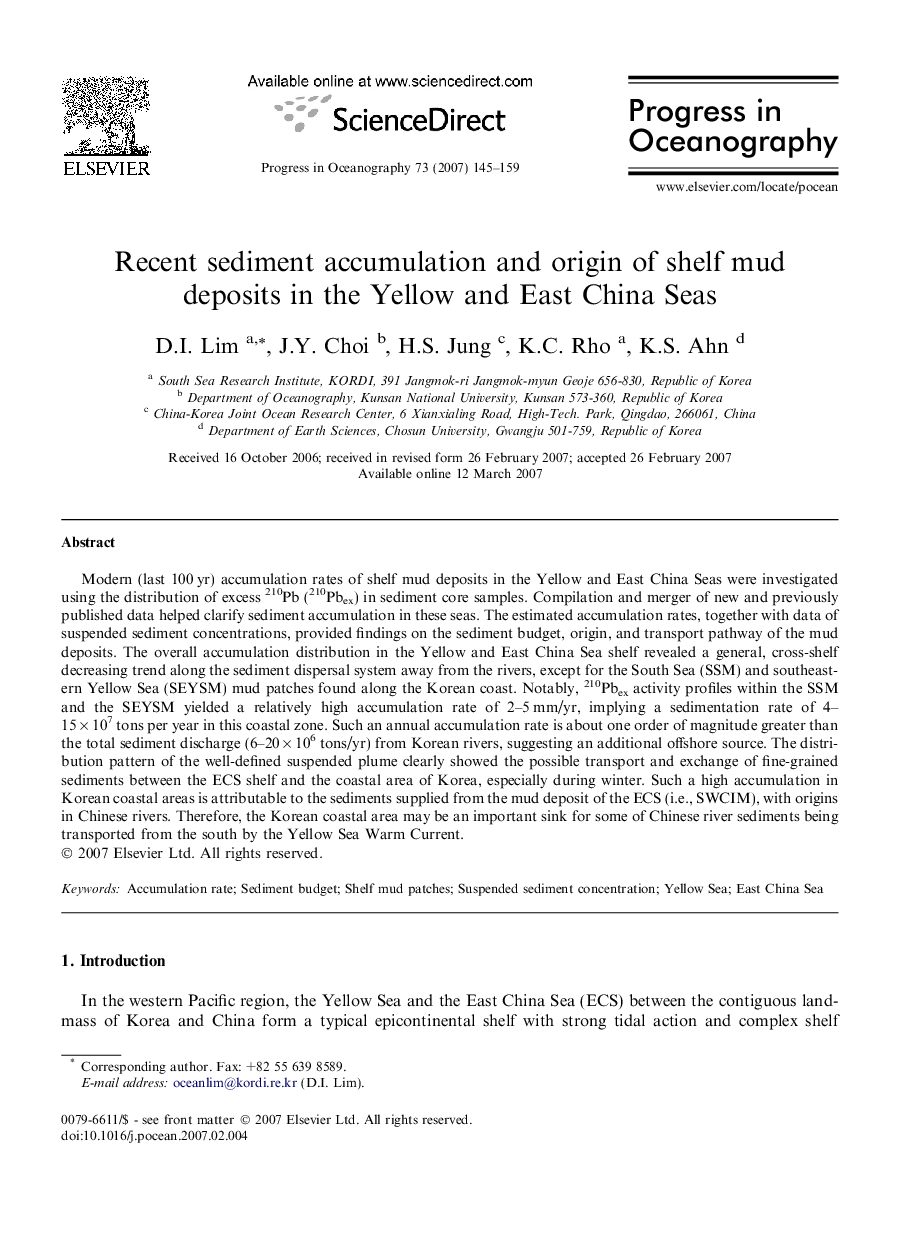| Article ID | Journal | Published Year | Pages | File Type |
|---|---|---|---|---|
| 4553782 | Progress in Oceanography | 2007 | 15 Pages |
Modern (last 100 yr) accumulation rates of shelf mud deposits in the Yellow and East China Seas were investigated using the distribution of excess 210Pb (210Pbex) in sediment core samples. Compilation and merger of new and previously published data helped clarify sediment accumulation in these seas. The estimated accumulation rates, together with data of suspended sediment concentrations, provided findings on the sediment budget, origin, and transport pathway of the mud deposits. The overall accumulation distribution in the Yellow and East China Sea shelf revealed a general, cross-shelf decreasing trend along the sediment dispersal system away from the rivers, except for the South Sea (SSM) and southeastern Yellow Sea (SEYSM) mud patches found along the Korean coast. Notably, 210Pbex activity profiles within the SSM and the SEYSM yielded a relatively high accumulation rate of 2–5 mm/yr, implying a sedimentation rate of 4–15 × 107 tons per year in this coastal zone. Such an annual accumulation rate is about one order of magnitude greater than the total sediment discharge (6–20 × 106 tons/yr) from Korean rivers, suggesting an additional offshore source. The distribution pattern of the well-defined suspended plume clearly showed the possible transport and exchange of fine-grained sediments between the ECS shelf and the coastal area of Korea, especially during winter. Such a high accumulation in Korean coastal areas is attributable to the sediments supplied from the mud deposit of the ECS (i.e., SWCIM), with origins in Chinese rivers. Therefore, the Korean coastal area may be an important sink for some of Chinese river sediments being transported from the south by the Yellow Sea Warm Current.
